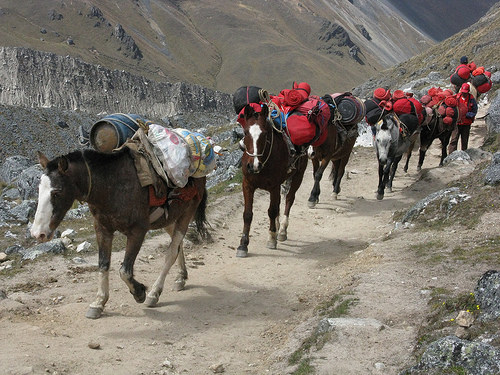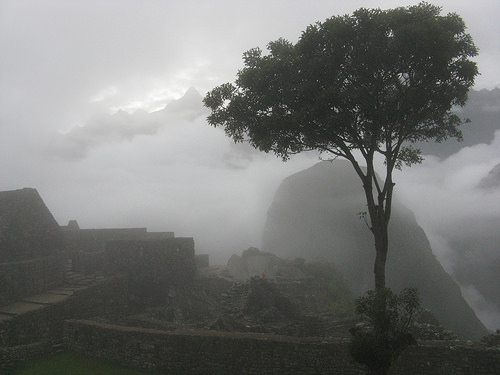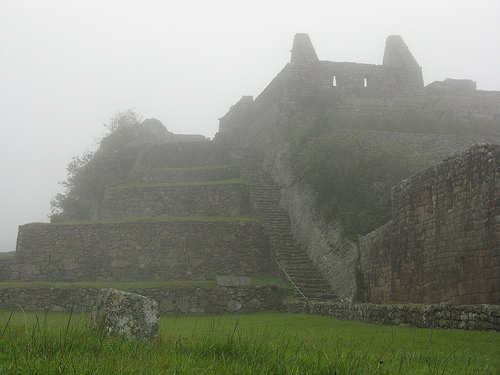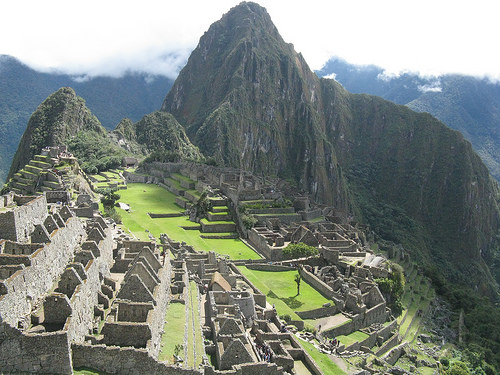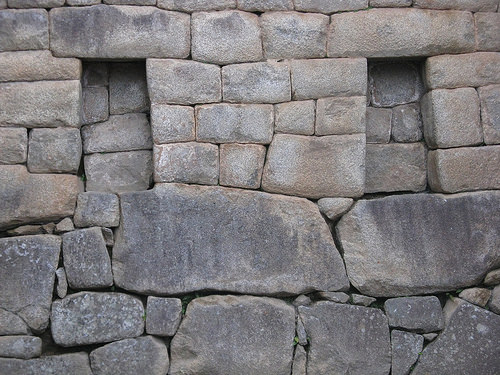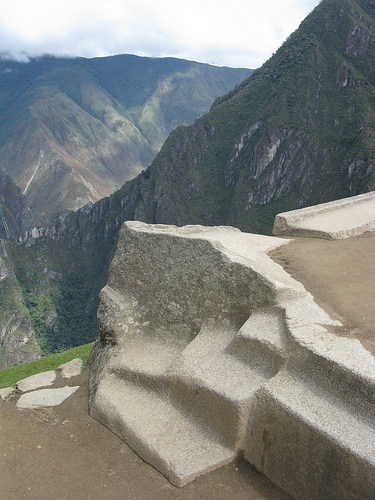Every morning around 5:30 a.m., voices outside our tent would offer us coca tea, saying, in not so many words, it was time to get our lazy asses out bed and head for the holy site.
To avoid the crowds and expense of the super-popular Inca Trail, Laura and I chose an alternate route to the lost city of Machu Picchu, one that took us by the base of the 20,500-foot Salkantay Mountain.
 The 20,500-foot Salkantay Mountain
The 20,500-foot Salkantay Mountain
The trek started on a Wednesday in a clearing near the village of Mollepata. We were accompanied by two guides, a cook, three horsemen and six horses and eight Dutch people who would sometimes make observations in their native language that sounded, to our untrained ears, a lot like the phrase “There are no ducks here.” (In fact, there weren’t.)
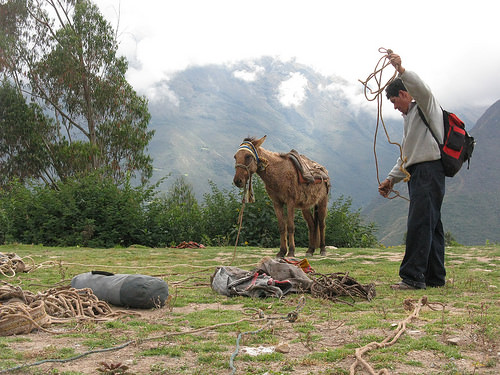 One of our excursion's horsemen preparing to strap sleeping bags, fleece jackets and potatoes to that horse's back
One of our excursion's horsemen preparing to strap sleeping bags, fleece jackets and potatoes to that horse's back
During the five-day, four-night trek, we hiked across foggy alpine meadows littered with lichen-covered rocks, crossed the 15,000-foot pass at the base of Salkantay Mountain and descended into a lush jungle where bromeliads, begonias and banana trees flourished. We passed through a number of farming communities along the way, where we’d often see people hoeing for potatoes or loading donkeys up with the harvest.
At periodic intervals, our group would stop, our guides would snap out the camp table and stools, and we’d feast on typical Peruvian food: soups, stuffed peppers, lomo saltado (that’s steak with veggies and fried potatoes).
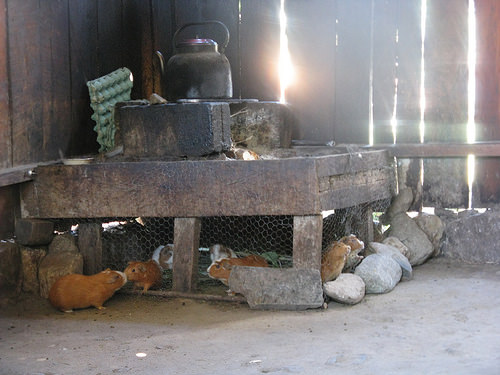 The food escaped its hutch in the kitchen one day as we were eating, but no one seemed to care. No, we weren't offered guinea pig.
The food escaped its hutch in the kitchen one day as we were eating, but no one seemed to care. No, we weren't offered guinea pig.
The trek ended in the super-touristy town of Aguas Calientes, the jump-off point to Machu Picchu, about a half-hour bus ride away. Not-so-tasty pizza parlors line the streets of this town built for travelers, and everyone wants you to try their restaurant’s cappuccino or spaghetti. We often did, I’ll admit, because there’s not much to do in the surreal little town besides eat.
When we arrived at Machu Picchu around 5 a.m. the following morning, a thick fog shrouded the ruins, giving them a very mystical air.
Llamas gently grazing in the lost Inca city
The fog lifted around 10:30 in the morning, revealing the Inca city in all its glory. Let me just say, I think Machu Picchu fully deserves its place among the New Seven Wonders of the World. The 15th-century Inca city is almost completely — well, 80 percent — original, just as the Incas left it around the time the Spaniards came to conquer them. The civilization built its city’s terraces, houses, plazas, temples, fountains and irrigation systems with smooth stones that fit perfectly together. We walked through the architecture marveling for most of the day.
The classic Machu Picchu shot
See, Laura and I really were there
Click here to see more pictures from our trek to Machu Picchu.

